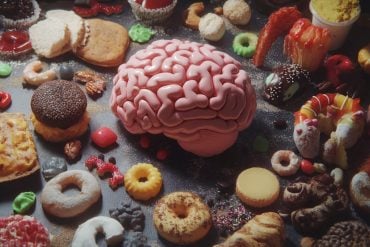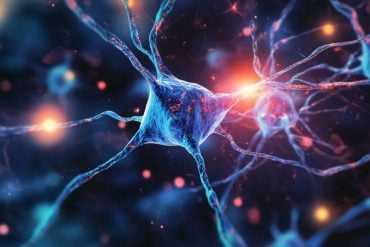Summary: Histamines may help to reduce tics associated with Tourette syndrome, a new mouse study finds.
Source: Yale .
Yale scientists produced increased grooming behavior in mice that may model tics in Tourette syndrome and discovered these behaviors vanish when histamine — a neurotransmitter most commonly associated with allergies — is introduced into their brains.
The research, published the week of June 5 in the Proceedings of the National Academy of Sciences, reaffirms previous genetic studies that linked histamine production and Tourette, an often serious neuropsychological disorder marked by motor and vocal tics.
“The intriguing thing is we were able to reverse this behavior in adult mice,” said Chris Pittenger, associate professor of psychiatry and senior author of the study. ”It is easier to imagine how this insight might develop into a treatment than if the abnormalities arose during early development.”
The researchers were able to trigger excessive grooming in mice by shutting down histamine neurons projecting to the basal ganglia, an area of the brain previously linked to Tourette. They could reverse the behavior by reintroducing histamine directly into the striatum, confirming that this structure is a central contributor to the pathology.

Histamine’s role in immunological reactions such as allergies has been intensively studied, but in recent years the neurotransmitter histamine in the brain has been linked to a variety of conditions, such as Parkinson’s, multiple sclerosis, autism and obsessive compulsive disorder, as well as Tourette syndrome.
Funding: Primary funding for the study was provided by the National Institutes of Health and the Allison Family Foundation.
Source: Bill Hathaway – Yale
Image Source: NeuroscienceNews.com image is adapted from the Yale news release.
Original Research: Abstract for “Histamine modulation of the basal ganglia circuitry in the development of pathological grooming” by Maximiliano Rapanelli, Luciana Frick, Haruhiko Bito, and Christopher Pittenger in PNAS. Published online June 5 2017 doi:10.1073/pnas.1704547114
[cbtabs][cbtab title=”MLA”]Yale “Tourette Like Tics Vanish With Histamine: Mouse Study .” NeuroscienceNews. NeuroscienceNews, 6 June 2017.
<https://neurosciencenews.com/histamine-tourette-tics-6847 />.[/cbtab][cbtab title=”APA”]Yale (2017, June 6). Tourette Like Tics Vanish With Histamine: Mouse Study . NeuroscienceNew. Retrieved June 6, 2017 from https://neurosciencenews.com/histamine-tourette-tics-6847 /[/cbtab][cbtab title=”Chicago”]Yale “Tourette Like Tics Vanish With Histamine: Mouse Study .” https://neurosciencenews.com/histamine-tourette-tics-6847 / (accessed June 6, 2017).[/cbtab][/cbtabs]
Abstract
Histamine modulation of the basal ganglia circuitry in the development of pathological grooming
Aberrant histaminergic function has been proposed as a cause of tic disorders. A rare mutation in the enzyme that produces histamine (HA), histidine decarboxylase (HDC), has been identified in patients with Tourette syndrome (TS). Hdc knockout mice exhibit repetitive behavioral pathology and neurochemical characteristics of TS, establishing them as a plausible model of tic pathophysiology. Where, when, and how HA deficiency produces these effects has remained unclear: whether the contribution of HA deficiency to pathogenesis is acute or developmental, and where in the brain the relevant consequences of HA deficiency occur. Here, we address these key pathophysiological questions, using anatomically and cellularly targeted manipulations in mice. We report that specific ablation or chemogenetic silencing of histaminergic neurons in the tuberomammillary nucleus (TMN) of the hypothalamus leads to markedly elevated grooming, a form of repetitive behavioral pathology, and to elevated markers of neuronal activity in both dorsal striatum and medial prefrontal cortex. Infusion of HA directly into the striatum reverses this behavioral pathology, confirming that acute HA deficiency mediates the effect. Bidirectional chemogenetic regulation reveals that dorsal striatum neurons activated after TMN silencing are both sufficient to produce repetitive behavioral pathology and necessary for the full expression of the effect. Chemogenetic activation of TMN-regulated medial prefrontal cortex neurons, in contrast, increases locomotion and not grooming. These data confirm the centrality of striatal regulation by neurotransmitter HA in the adult in the production of pathological grooming.
“Histamine modulation of the basal ganglia circuitry in the development of pathological grooming” by Maximiliano Rapanelli, Luciana Frick, Haruhiko Bito, and Christopher Pittenger in PNAS. Published online June 5 2017 doi:10.1073/pnas.1704547114






